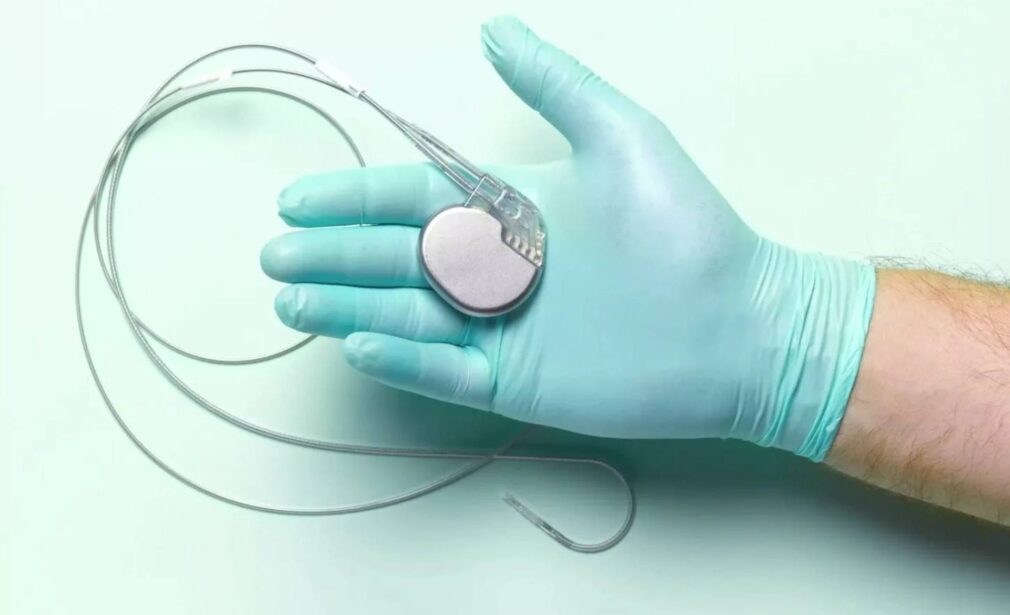Pacemaker & Defibrillator Implantation in Mohali
Advanced Heart Rhythm Management with Expert Care
When the heart’s natural rhythm becomes dangerously slow, irregular, or erratic, life-saving devices like pacemakers and defibrillators can restore normal heart function and prevent sudden cardiac arrest.
At her state-of-the-art cardiology practice in Sector 63, Mohali, Dr. Honey Sharma, an experienced Interventional Cardiologist, offers advanced Pacemaker and Defibrillator Implantation procedures, including:
TPI (Temporary Pacemaker Implantation)
PPI (Permanent Pacemaker Implantation)
AICD (Automated Implantable Cardioverter Defibrillator)
CRT-D (Cardiac Resynchronization Therapy with Defibrillator)
Leadless Pacemaker Implantation
What is a Pacemaker?
A pacemaker is a small medical device implanted under the skin of the chest to help manage abnormal heart rhythms (arrhythmias). It uses electrical pulses to prompt the heart to beat at a normal rate and rhythm.
Types of Pacemakers
Temporary Pacemaker (TPI) – Used in emergencies or during short-term recovery after certain cardiac procedures.
Permanent Pacemaker (PPI) – Provides long-term rhythm correction for chronic conditions like bradycardia (slow heart rate).
Leadless Pacemaker – A revolutionary, minimally invasive device implanted directly into the heart without leads (wires).
What is a Defibrillator?
A defibrillator, specifically an AICD or CRT-D, is an advanced implantable device that can detect life-threatening heart rhythms and deliver an electric shock to restore a normal rhythm—often preventing sudden cardiac death.
Types of Defibrillators Implanted by Dr. Honey Sharma
AICD (Automated Implantable Cardioverter Defibrillator) – Monitors heart rhythms and delivers therapy when needed.
CRT-D (Cardiac Resynchronization Therapy with Defibrillator) – Coordinates the heart’s pumping action in patients with heart failure while also protecting against dangerous arrhythmias.
When Do You Need a Pacemaker or Defibrillator?
Dr. Honey Sharma may recommend these devices for conditions such as:
Symptomatic bradycardia (slow heart rate)
Heart block (electrical conduction delay in the heart)
Sick sinus syndrome
Ventricular tachycardia or ventricular fibrillation
Heart failure with reduced pumping ability
Post-heart attack arrhythmias
Syncope (fainting) caused by abnormal rhythms
Procedure: Pacemaker & Defibrillator Implantation in Mohali
1. Pre-Procedure Evaluation
ECG, Holter Monitoring, and Echocardiogram
Detailed physical examination and medical history review
Risk-benefit discussion with the patient and family
2. The Implantation Process
Performed under local anesthesia with sedation
A small incision is made near the collarbone
Leads (if applicable) are guided into the heart through a vein
The device is connected to the leads and placed under the skin
Leadless pacemakers are implanted directly into the heart via catheter
3. Post-Procedure Care
Device testing before discharge
Antibiotics to prevent infection
Follow-up visits for device programming and monitoring
Benefits of Pacemaker & Defibrillator Implantation with Dr. Honey Sharma
1. Life-Saving Protection
Defibrillators can stop fatal arrhythmias instantly, preventing sudden cardiac death.
2. Restored Quality of Life
Pacemakers help eliminate symptoms like fatigue, dizziness, and fainting, allowing patients to return to normal activities.
3. Expertise in Advanced Devices
Dr. Sharma is skilled in implanting both conventional and latest-generation devices such as leadless pacemakers and MRI-compatible systems.
4. Minimal Recovery Time
Most patients resume light activities within days and fully recover within weeks.
Pacemaker & Defibrillator Care in Mohali – What to Expect After Implantation
Regular Device Checks – To ensure proper functioning and battery life
Activity Precautions – Avoid heavy lifting for a few weeks
Device Longevity – Pacemaker batteries last 5–10 years; replacements are straightforward
Airport Security Awareness – Inform security personnel about your implant
Frequently Asked Questions (FAQs)
1. Is the implantation procedure painful?
No, it is done under local anesthesia, and discomfort is minimal.
2. How long will I need to stay in the hospital?
Most patients are discharged within 24–48 hours.
3. Can I live a normal life after implantation?
Yes—most patients return to daily routines with improved energy and well-being.
4. Will I feel the shocks from a defibrillator?
You may feel a brief jolt if the device corrects a dangerous rhythm, but it lasts only a moment and saves your life.
5. Can I have an MRI after getting a pacemaker?
Yes, if you have an MRI-compatible device, which Dr. Sharma offers.
Why Choose Dr. Honey Sharma for Pacemaker & Defibrillator Implantation in Mohali?
DrNB in Interventional Cardiology from Fortis Hospital, Mohali
8+ years of expertise in device implantation
Specialized in complex rhythm disorders and heart failure management
Member of CSI and WINCARS
Personalized care with advanced, minimally invasive techniques
Book Your Consultation
If you have been experiencing dizziness, fainting, palpitations, or have been advised to consider a pacemaker or defibrillator, don’t delay. Early treatment can save your life.

